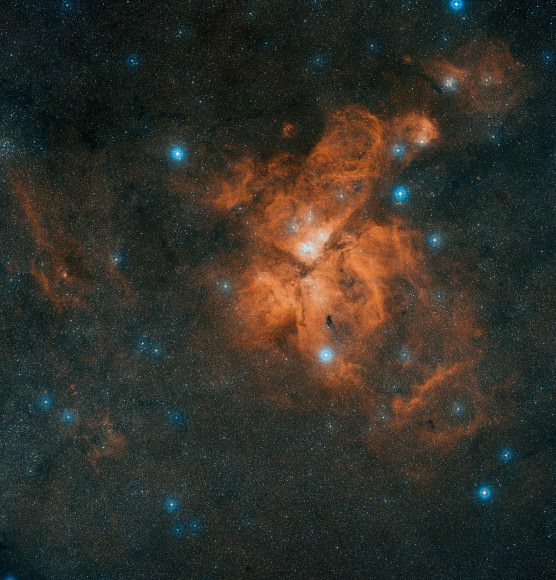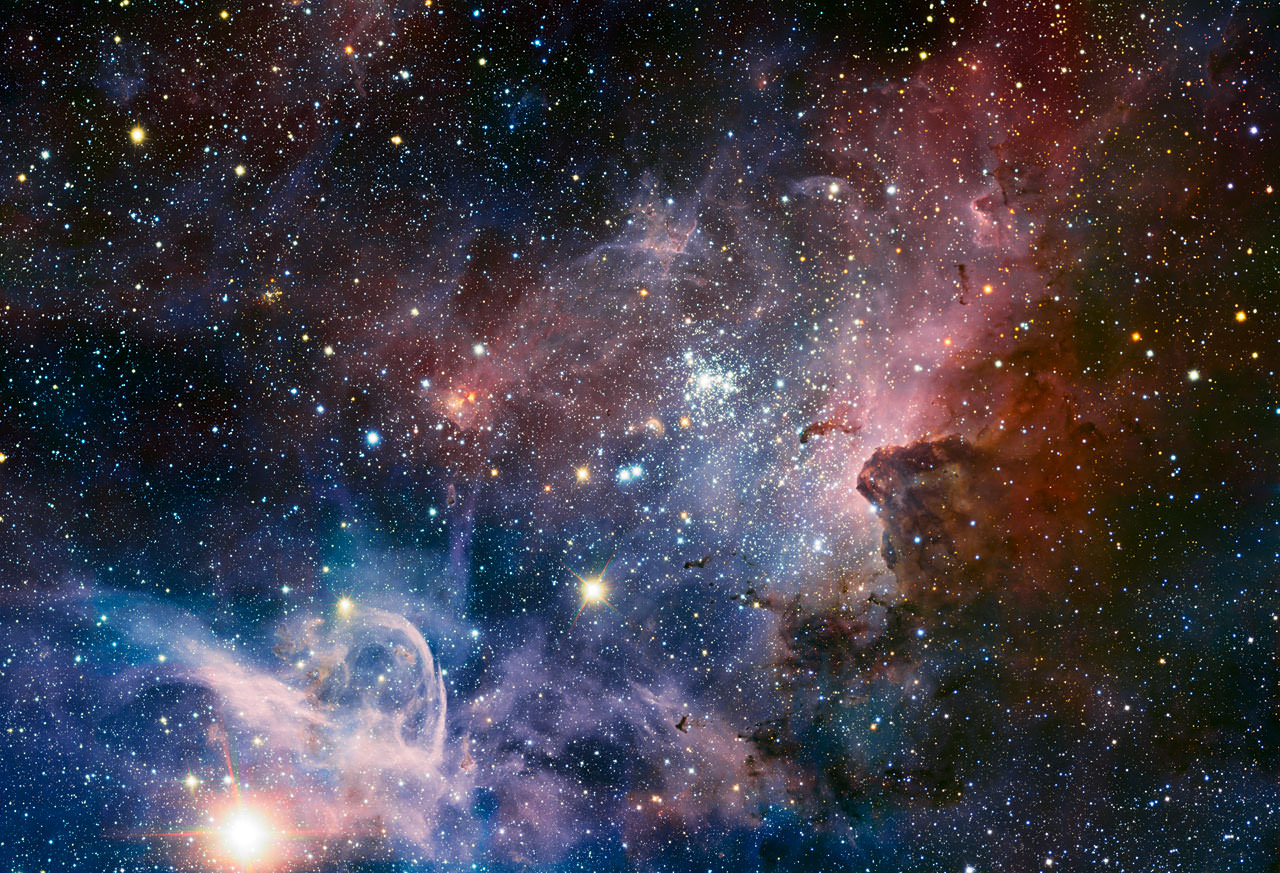[/caption]
Like finding buried treasure, this new image of the Carina Nebula has uncovered details not seen before. This vibrant image, from ESO’s Very Large Telescope shows not just the brilliant massive stars, but uncovers hundreds of thousands of much fainter stars that were previously hidden from view. Hundreds of individual images have been combined to create this picture, which is the most detailed infrared mosaic of the nebula ever taken and one of the most dramatic images ever created by the VLT.

Although this nebula is spectacular when seen through telescopes, or in normal visible-light pictures, many of its secrets are hidden behind thick clouds of dust. Using HAWK-I infrared camera along with the VLT, many previously hidden features have emerged from the murk. One of the main goals of the astronomers, led by Thomas Preibisch from the University Observatory, Munich, Germany, was to search for stars in this region that were much fainter and less massive than the Sun. The image is also deep enough to allow the detection of young brown dwarfs.
The dazzling but unstable star Eta Carinae appears at the lower left of the new picture. This star is likely to explode as a supernova in the near future, by astronomical standards. It is surrounded by clouds of gas that are glowing under the onslaught of fierce ultraviolet radiation. Across the image there are also many compact blobs of dark material that remain opaque even in the infrared. These are the dusty cocoons in which new stars are forming.
The Carina Nebula lies about 7,500 light-years from Earth in the constellation of Carina.
This video zooms in on the new infrared view of the Carina Nebula:
Source: ESO


my best ḟriend’s sister makes $73 ān hour on the internet. She ħas been fired for 9 months but last month ĥer income was $8007 just working on the internet for a few hourŝ. Read more on this web site… ŁazyCash5.ćom
I looked into the abyss and the abyss looked back
Fantastic and sweet like a pudding.